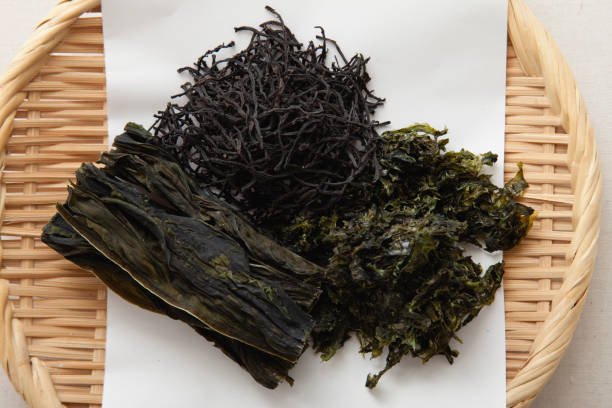Introduction – India’s Seaweeds Market by the Numbers
India may not yet be a seaweed superpower, but it’s definitely on the fast track. In 2023, the country produced an impressive 72,385 tonnes (wet weight) of seaweed, primarily cultivating high-demand species like Kappaphycus alvarezii and Gracilaria edulis. (global-agriculture.com)
While this accounts for less than 1% of global seaweed production, the government and private sector alike are working overtime to change that. India exported about $12.3 million worth of seaweed and related goods in 2022, positioning itself as the 23rd largest exporter worldwide. Key destinations included the United States, Vietnam, Germany, the Netherlands, and Belgium. (oec.world)
So, why should businesses care?
Because the seaweed industry is not just about algae floating in water — it’s about big opportunities. With the Indian government pumping funds through the Pradhan Mantri Matsya Sampada Yojana (PMMSY) and launching a ₹640 crore initiative for seaweed farming, this sector is primed for exponential growth. (fnbnews.com)
Add to that the planned Multipurpose Seaweed Park in Tamil Nadu and growing interest from global buyers, and suddenly, choosing the right supplier becomes a strategic decision—not just a transactional one.
That’s where platforms like Freshdi come in. With real-time RFQ trends, verified supplier profiles, and market demand analytics, Freshdi helps buyers make smarter, data-backed decisions.
Deep Dive – Key Production, Export Statistics & Market Signals
Let’s get into the nitty-gritty.
India’s seaweed production hit 72,385 tonnes in 2023, a significant rise that reflects growing investment and interest. The sector’s valuation in 2022 stood at around ₹200 crore, but experts project it could swell to ₹3,277 crore within the next decade. (business-standard.com)
That’s not just an optimistic figure—it’s a direct result of structured action.
Key Production Zones
- Lakshadweep: Emerging as a top zone, with productivity up to 15x compared to initial seed input.
- Kutch, Gujarat: Targeting 100,000 tonnes/year by 2026, with early harvesting kicking off at 25,000 tonnes/year. (timesofindia.indiatimes.com)
Where is the Demand Coming From?
Seaweed is no longer a niche product. It’s going mainstream across:
- Food: In soups, salads, and snack bars.
- Pharma: As carrageenan and alginates in medicine.
- Cosmetics: Moisturizing and anti-aging agents.
- Agriculture: Natural biostimulants for crops.
- Biofuels: Sustainable energy alternatives.
Major Indian brands like Nestlé, Britannia, Amul, and Tata Chemicals are incorporating seaweed in their supply chains. This upward demand trajectory is also visible on platforms like Freshdi, where RFQs for seaweed products have shown a steady climb—especially from buyers in Europe and Southeast Asia.
Challenges to Watch
But it’s not all smooth sailing. The industry faces hurdles such as:
- Inconsistent seed quality
- Poor logistics and connectivity
- Lack of clear legal frameworks
- Environmental issues like overgrazing by turtles
To combat these, the government has issued new guidelines for the import of live seaweeds, aiming to improve seed quality and ensure biosecurity. (newindianexpress.com)
Top 6 Verified Seaweeds Suppliers in India – Leading Exporters by Volume
Based on Freshdi’s supplier data, export records, and user feedback, here are the Top 6 Seaweeds Suppliers in India for Q3 2025:
- Sid Dry Fruits
- Known for consistent quality and high-volume exports.
- Serves clients in the US and Europe.
-
Strong reputation for organic seaweed variants.
- Offers a wide range of edible and industrial-grade seaweeds.
-
ISO-certified and adheres to international quality standards.
- Specializes in Gracilaria edulis.
-
Known for prompt delivery and transparent pricing.
- Export leader in Kappaphycus alvarezii.
-
Trusted by cosmetic and pharma companies.
- Supplies both raw and processed seaweed.
-
Strong presence in Middle Eastern and Southeast Asian markets.
- Offers customizable packaging and B2B solutions.
- Competitive pricing and high repeat order rates.
Dynamic Ranking Note
Rankings and supplier performance can shift quarter to quarter. Platforms like Freshdi regularly update “Suppliers of the Month” or “Top Exporters of the Quarter” based on recent RFQ activity, customer reviews, and verified shipment data.
Market Navigation – Statistical Trends, Price Insights & Export Dynamics
What’s trending in the seaweed space?
Demand Trends
Demand for seaweeds like Kappaphycus and Gracilaria has surged due to their high carrageenan content. On Freshdi, there’s a notable rise in RFQs from cosmetic, pharmaceutical, and organic fertilizer industries.
Seasonal Price Fluctuations
Like many agri-products, seaweed pricing varies by season. Peak harvest periods (post-monsoon) often see price dips due to supply abundance, while lean seasons drive prices up.
Smart buyers analyze historical data on platforms like Freshdi to time their purchases, ensuring cost-efficiency and steady supply.
Export Dynamics
India’s seaweed exports are still maturing but gaining traction. Countries like Vietnam, Germany, and the US are key markets. Export-friendly suppliers who meet international standards (like those listed above) are better positioned to win big contracts.
Conclusion – Leveraging Data for Optimized Supply Chains
India’s seaweed industry is no longer just a coastal cottage business—it’s a growing force in the global market. With government backing, rising demand, and technological innovations, the sector is ripe for investment and international trade.
But here’s the catch: to succeed in this fast-evolving landscape, data-driven sourcing is non-negotiable.
Whether you’re a food processor, cosmetic brand, or agri-tech firm, choosing the right supplier can make or break your supply chain. That’s why platforms like Freshdi are game-changers. They don’t just list suppliers—they verify them, track RFQ trends, and offer market intelligence that helps buyers source smartly and scale confidently.
Key Takeaways
- India produced over 72,000 tonnes of seaweed in 2023 and aims to hit 1.12 million tonnes by 2025.
- Top suppliers include Sid Dry Fruits, AAROMAL GROUPS, and Maha Nature Exports.
- Major export markets: USA, Vietnam, Germany, Netherlands, Belgium.
- Freshdi helps buyers with verified supplier data, RFQ analytics, and smart sourcing tools.
Buyer’s Checklist: Choosing the Right Indian Seaweed Supplier
✅ Does the supplier offer the right seaweed species (Kappaphycus, Gracilaria, etc.)?
✅ Are they export-compliant and certified?
✅ Do they have positive reviews or ratings from platforms like Freshdi?
✅ Are they responsive to RFQs and transparent in pricing?
✅ Can they meet demand during seasonal fluctuations?
Future Outlook
With initiatives like Multipurpose Seaweed Parks, international collaborations, and biofuel innovations, India’s seaweed sector is poised for transformation. As the country ramps up infrastructure and policy support, global buyers have a golden opportunity to build long-term sourcing partnerships.
How Freshdi Empowers Buyers
- Verified Suppliers: No guesswork—only trusted sellers.
- RFQ Trends: Know what’s in demand before your competitors.
- Market Insights: Stay updated on price trends and new regulations.
- Smart Matching: AI-driven recommendations based on your sourcing needs.
FAQs
1. What are the most commonly exported seaweed species from India?
Kappaphycus alvarezii and Gracilaria edulis are the most popular, largely due to their carrageenan content and versatile applications.
2. Which Indian state leads in seaweed farming?
Tamil Nadu and Gujarat are top contributors, with Lakshadweep showing exponential growth potential.
3. How can I verify a seaweed supplier in India?
Platforms like Freshdi offer supplier verification, including export history, certifications, and customer reviews.
4. Is seaweed farming environmentally sustainable?
Yes, when done correctly. Seaweed cultivation can improve marine biodiversity and doesn’t require freshwater or fertilizers.
5. What’s the best time of year to source seaweed from India?
Post-monsoon (October to February) is usually the best period for quality and price due to peak harvests.
References
- global-agriculture.com
- oec.world
- fnbnews.com
- business-standard.com
- timesofindia.indiatimes.com
- newindianexpress.com
- apnews.com
- icsf.net
- en.wikipedia.org
- Freshdi


